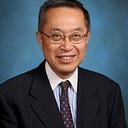Member-only story
How can we tell what authentic Buddhist teaching is?
I recently said that searching for the historical Buddha is just as frustrating as searching for the historical Jesus. Both searches yield nothing substantive. There is more evidence that the historical Buddha does not exist than otherwise. This is a fact that Buddhist scholars will attest to.
Yet, this leads to a problem when we quote a commonly accepted Buddhist teaching. I like quoting from the Kalama Sutta. The Kalama Sutta’s basic message is that we must be skeptical about what we hear, read, see, or think. Because of this teaching, we must conclude that we cannot simply take what is written in the Pali Canon as authentic Buddhist teaching. How can we be so gullible? We were not born yesterday. How can we distinguish true spiritual teaching from religious propaganda? This is not an easy task.
This is a very reasonable approach to the modern mind. But how can we tell that this imploration to be skeptical and verify what we hear is authentic in itself?
This is truly a dilemma. But the task of verification or authentication is not absolutely impossible. Personally, I employ certain common-sense rules:
- Sayings which do not serve the establishment’s self-interest are likely to be authentic. In the Kalama Sutta, it is said that Buddha told his followers that even his own words…
